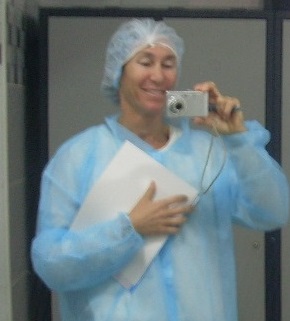




Auditing under Covid-19
audit auditing food safety audit covid-19 coronavirus

Finally, in May some food manufacturing facilities in Spain started to receive auditors again after the national lockdown was called off. The firsts audits during the pandemic have been more challenging than normal, both for the auditor and the auditee.
Travelling and logistics during a pandemic
Mobility restrictions vary during the pandemic depending on what phase the country or the region is in. Gradually, as the lockdown restrictions are eased, the bus, train, and air travel resume but not with the same frequency. In September I could fly from Madrid to Vigo leaving and 6.45 and return the same night at 20.50. During the pandemic, the flight leaves at 10.40 and it returns at 12.35 making it necessary to stay overnight. Then you need to find a hotel near the plant which is exceedingly difficult as many have been forced to close. When you find a hotel within an acceptable distance to the plant you are lucky if they have breakfast and dinner service.
Preparing the audit pre-start checklist
This new requirement was put in place to make sure that the facility has the appropriate systems in place to minimize the exposure to the Covid-19 virus. This is necessary for the audit to proceed. The checklist contains questions about the Potential Exposure:
Has the site ensured that staff members that have reported close contact with a confirmed case of Covid-19 have not presented to work in the previous 14 days?
Has the site been free from confirmed cases of Covid-19 for the last 14 days?
Do you have a system in place to ensure that unwell staff do not present to work for the prescribed period?
The checklist also evaluates the Workplace Risks:
Do you provide access to hand sanitizer or soap/hand washing facilities?
Does the site undertake appropriate cleaning of surfaces to minimize the risk of infection?
The plants also do Covid-19 tests on their employees, rapid test, and PCR. If any employee (including those at the Office) shown to be infected the date of the audit will change to ensure that there is no risk for other employees and the auditors (with a 14-day window).
Conducting the food safety audit in the plant during a pandemic
Once the audit starts in the facility it is almost as normal. The most difficult part is to maintain the physical distance to the people you interview. In a slaughterhouse, or if you are close to an oven, a fryer, or a retort it is difficult to hear what people say. To compensate for this, I try to resolve the issues with confidential reporting and food safety culture by extending the plant visit and pay extra attention to the behavior in the workplace.
During the pandemic, many plants have reduced the production. This means that not all lines that are under the audit scope are running. For example, lines with operators working close to each other and quality visual controls; and the social distance cannot be kept are closed. These lines shall be audited later in an extension audit when the production is resumed.
Due to the pandemic the plants were not able to have the pest Control visits as planned. External contractors have not been able to visit the plants because of the restrictions. During this time the plants should have done their own additional monitoring and controls. If no microbiological tests were done for environmental and personnel clothes or hand hygiene, then a NC is raised. These requisites are essential also during a pandemic.
Temporary personnel can also be a problem. Although new employees receive training it takes some time before assimilating the food safety culture. In an onion powder packing area, I audited recently, one single employee was responsible for 3 NC; not available medical declaration or screening, working with bare arms, and a small injury (already healing) in an unprotected hand.
Basic hygiene protocols and GMP is not new in certified companies. Measuring the body temperature of the employees at the entrance should not be difficult to implement. The risk awareness in staff and management in the food industry is high and they adapt to the situation, but they cannot move as fast as small businesses and restaurants in implementing solutions. An automatic door opening system can be installed in a restaurant kitchen in a day, but older food production facilities are stuck with what they got. I just audited a ham slicing factory built in 2005. To access the meeting room, I had to open 7 doors with my hand. Even if hand sanitizer was available at some of the doors the probability to contact infectious elements is a lot higher.
One last note I would like to add to this article is about the responsibility that food production facilities have. There has been outbreaks among workers who live in overcrowded barracks provided by their employers. This is true especially for workers in the campaign fruit industry. Many are migrant workers and they are housed in remote locations with no possibility to social distancing. I know this is a problem that lies outside the scope of audit but eventually the problem moves inside the factory.
Lessons learned
To ensure successful audit during these times: plan with time the travel logistics and pay attention to last minute changes. For auditee, put extra emphasis on temporary workers with adequate follow up of their daily activities.
About the Author:

Leila J Burin, PhD Food Chemistry.
Lead Auditor in BRC, IFS, FSSC 22000, ISO 22000. I work as a food safety auditor since more than 20 years. I started my career in Latin America and for the last 10 years I have been working in Europe. I have a scientific background with a PhD in Chemistry and over the years I work with most standards and categories in the food industry such as HEINZ, BRC, IFS, FSSC22000, SQMS, LIDL, and several others. Since 2010 I am also the Training Coordinator for “Portal de Inocuidad” which is an on-line service for Spanish speaking food safety professionals. Also, BRC ATP since January 2020.










